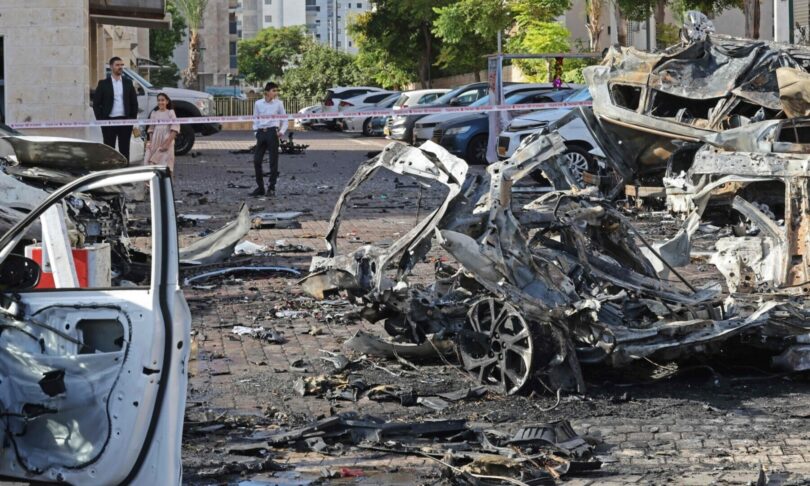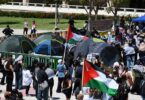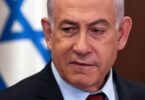Umair Aslam Sherani
On the October 7, 2023, Hamas started Operation Al-Aqsa Flood, an unprecedented multifaceted and persistent attack against Israel from the Gaza Strip.
Thousands of rockets, drones, motorized paragliders, tunnels, and ground infiltrations were used in the attack. Hamas attacked civilian and military targets in southern and central Israel, killing hundreds of people and kidnapping many more. Hamas also claimed to have kidnapped several Israeli soldiers and vehicles.
The strike was Hamas’s greatest and most orchestrated since its inception in 1987. Israel retaliated with a powerful counteroffensive known as Operation Iron Swords.
The IDF conducted airstrikes, artillery bombardment, and ground incursions into Gaza, targeting Hamas infrastructure, weaponry, and commanders. Additionally, Israel proclaimed a state of war under Article 40A, using it for the first time since the 1973 Yom Kippur War. Israel called up the largest reservists ever—300,000—in its history.
To prevent any humanitarian help or supplies from reaching or leaving the enclave, Israel also placed a naval blockade and a land embargo on Gaza. The Palestinian Health ministry said another 13,162 people have been wounded in the Israeli strikes, which have been ongoing since October 7. The latest fighting in Gaza between Hamas and Israel has generated concerns and raised debates about intelligence failures and breaches of human rights.
The ease with which Hamas fighters entered Israeli cities and attacked military facilities across the border raised concerns about Israel’s intelligence. Some theories suggest that Israel misjudged Hamas’s creativity, while others contend that internal Israeli state problems hampered a rapid reaction.
The Israeli reaction to the Hamas strike, on the other hand, has been chastised for its disproportionate use of force and disdain for civilian life. Israel has imposed a “complete siege” on the populous Gaza Strip, cutting off power, food, water, and gasoline supplies while also shelling the heavily populated Gaza’s 2.3 million residents. Hospitals in Gaza were overburdened with victims and threatened closure owing to a shortage of fuel and equipment.
Many individuals were either buried beneath rubble or forced to evacuate their houses because of the incessant bombing. The United Nations projected that over 1.1 million people were displaced and in need of refuge. The dead toll in Gaza has risen to over 4,100 people, including over 1,000 children and women.
On October 21, 2023, the Cairo Peace Summit was convened in Cairo, Egypt, to address the current humanitarian catastrophe in Gaza and to avert a larger regional conflict. Several Arab and European heads of state and government attended the conference, as did foreign ministers from over 30 nations, territories, and international organizations, including China and Russia. Many Arab and European heads of state and government, as well as foreign ministers from over thirty nations, territories, and international organizations, including China and Russia, convened in Cairo, Egypt, for the Cairo Peace Summit.
The conference was convened to address the growing humanitarian catastrophe in Gaza and to avert a larger regional conflict. Attendees included prominent leaders such as Egyptian President Abdel Fattah al-Sisi, Palestinian President Mahmoud Abbas, Jordanian King Abdullah, Bahraini King Hamad bin Isa Al Khalifa, Qatari Emir Sheikh Tamim bin Hamad al-Thani, Italian Prime Minister Giorgia Meloni, Spanish Prime Minister Pedro Sanchez, Greek Prime Minister Kyriakos Mitsotakis, Cypriot President Nikos Christodoulides, and South African President Cyril Ramaphosa.
The Cairo Peace Summit was a crucial step towards hopes of a ceasefire and the issue of humanitarian issues. Israel’s closest friend, the US sent just its embassy Charge d’Affaires, who should have addressed the conference publicly but refrained from speaking.
However, some key players in the region were absent from the conference, such as Iran, Pakistan. Egyptian President Abdel-Fattah El-Sisi convened the conference to discuss de-escalating the war in Gaza, pursuing a truce, and seeking a settlement to the long-running Israeli-Palestinian conflict through a “two-state solution.” The summit, however, ended without presidents and foreign ministers agreeing on a common statement and there was no agreement towards containing the violence. Diplomats attending the talks were pessimistic about a resolution, with Israel planning a ground assault on Gaza to eliminate Hamas fighters.
This assault can be another catastrophe for the already severe and unprecedented humanitarian issue. Since Israel stopped allowing goods into Gaza, the humanitarian catastrophe has intensified. Trucks carrying humanitarian supplies began entering Gaza through the Rafah border, the only non-Israeli entry point, shortly before the conference began. At the same time, Gaza was being bombed, and Israel prepares to have boots on ground in Gaza. The conference was conducted amid mounting worries about a Middle East war, and several speakers expressed concern that the current violence may escalate into a larger regional conflict.
UN Secretary-General António Guterres emphasized the need to uphold international humanitarian law, which includes protecting civilians and not attacking hospitals, schools, and UN premises that are currently sheltering half a million people. He expressed concern that two million people in Gaza are currently living without access to necessities such as water, food, fuel, electricity, and medicine, while hundreds of trucks carrying essential supplies are stranded on the Egyptian side of the border.
He also called for all parties not to lose sight of the “only realistic foundation for a true peace and stability” in the region – a two-state solution. The absence of high-ranking officials from Israel’s primary ally, the United States, as well as other major Western leaders, has dampened expectations for the hastily organized event and its potential outcomes.
Delegates at the meeting aimed to generate momentum for long-term humanitarian relief by calling for a quick ceasefire and the admission of much-needed humanitarian aid into Gaza.
The summit, however, ended without presidents and foreign ministers agreeing on a common statement, and there was no agreement on how to stop the bloodshed. Diplomats attending the talks were pessimistic about a resolution, with Israel planning a ground assault on Gaza to eliminate Hamas fighters.







